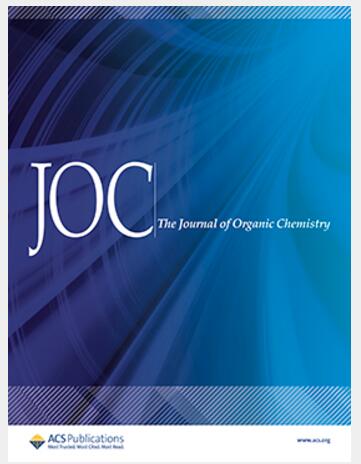Rational Design of Supramolecular Receptors for Consistent Binding Affinities under High-Salinity Conditions
IF 3.3
2区 化学
Q1 CHEMISTRY, ORGANIC
引用次数: 0
Abstract
The development of water-soluble multicharged macrocycles has opened promising pathways in biomedical applications, enabling selective molecular recognition for therapeutic and diagnostic uses. Yet, traditional polyanionic and polycationic receptors often face performance limitations under realistic operating conditions. A major drawback is the natural tendency of these polycharged hosts to experience increasing screening effects as concentration rises due to self-ion pairing phenomena, which can reduce binding efficiency by several orders of magnitude. These issues are further intensified when polyionic receptors are used in high-salinity environments, typically used to replicate physiological settings, where the abundance of ions introduces additional screening effects that diminish the supramolecular affinity for a wide range of guests. This study presents a new approach that leverages zwitterionic synthetic receptors with rationally engineered architectures to overcome these challenges. By incorporation of specific structural features, self-ion pairing is eliminated, effectively making host concentration no longer a controlling factor in the thermodynamics of the complexation process. Additionally, these dual-charged hosts achieve self-contained stabilization, naturally shielding recognition sites from external ion interference under high-salinity conditions. Furthermore, the ability of these supramolecular hosts to encapsulate zwitterionic guests, a challenging task due to the strong solvation of these molecules in aqueous solution, adds significant value to the functional versatility of these macrocycles. Altogether, these findings represent a significant advancement in the design of stable and adaptable receptor systems for complex environments.

求助全文
约1分钟内获得全文
求助全文
来源期刊

Journal of Organic Chemistry
化学-有机化学
CiteScore
6.20
自引率
11.10%
发文量
1467
审稿时长
2 months
期刊介绍:
Journal of Organic Chemistry welcomes original contributions of fundamental research in all branches of the theory and practice of organic chemistry. In selecting manuscripts for publication, the editors place emphasis on the quality and novelty of the work, as well as the breadth of interest to the organic chemistry community.
 求助内容:
求助内容: 应助结果提醒方式:
应助结果提醒方式:


